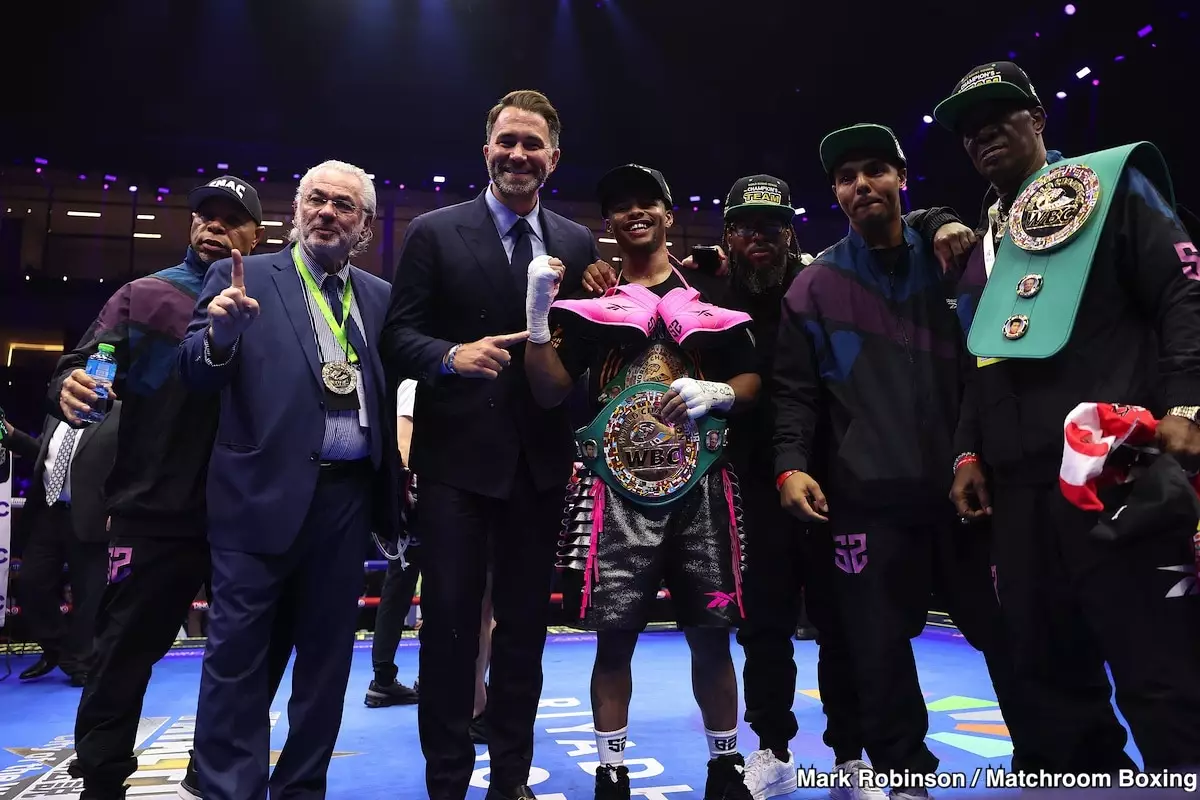In the world of boxing, few narratives are as compelling as that of Shakur Stevenson, the WBC lightweight champion whose potential next move has set the industry abuzz. As reports swirl around his potential departure from Matchroom to pursue a title fight against William Zepeda on July 12 in New York, the question looms larger than life: what does this mean for Stevenson’s career trajectory? This development not only highlights the intricate dance between fighters and promoters but also raises enlightening questions about loyalty, marketability, and the nature of success in the sport.
The Promoter’s Perspective
Eddie Hearn, a titan in boxing promotion, recently confirmed that he discussed Stevenson’s contractual obligations with Lou DiBella. Hearn’s assertion that Stevenson is bound by a “two-fight deal” has implications that resonate throughout the boxing community. Hearn’s commitment hinges on his belief in Stevenson’s talent and marketability. He expressed a desire for Stevenson to finish his career with Matchroom, but the mounting pressure of financial negotiations fluctuating with performance outcomes introduces a layer of uncertainty. Should Stevenson falter against Zepeda, Hearn’s enthusiasm for retaining him would inevitably wane, revealing the harsh reality of how quickly fortunes can change in boxing.
In Hearn’s comments, we detect the undercurrent of promotion within the business. He acknowledged the forthcoming meeting with Stevenson, his team, and Saudi Arabian sports magnate Turki Alalshikh, suggesting that matters were far from settled. The stakes for Stevenson’s future have never been higher; a victory could usher in lucrative offers, while a loss might pigeonhole him into a less glamorous career trajectory.
The Complexity of Fighter Loyalty
Stevenson’s potential move raises serious questions about the nature of loyalty in boxing. It’s a complex relationship where fighters often feel torn between remaining and building a legacy with their initial promoters and the allure of new opportunities that promise greater financial rewards or better fight matchups. This dichotomy is reminiscent of a high-stakes game where loyalty is constantly scrutinized. If Stevenson’s team does strike a deal with DiBella and he succeeds against Zepeda, he may find himself in the center of a bidding war for his services. However, if he gets overwhelmed in the ring, the table will turn, leaving him vulnerable and marketed at a loss.
Hearn’s pragmatic remarks about Stevenson’s potential performance echo a larger sentiment in sports: the need for fighters to constantly prove their worth. For Stevenson, there’s pressure not only to win but to impress—something made especially critical given his reported brittle hands and diminishing knockout power. His fighting style, once marked by a defensive brilliance that confounded opponents, has garnered mixed reactions. Critics argue that if he cannot adapt or boost his performance against elite challengers, he risks being relegated to a lower status in a cutthroat promotional landscape.
Confronting the Digital Age’s Impact
In a fascinating turn, Hearn spoke about the impact of social media on athletes, specifically referencing the online backlash Stevenson faced recently. In an era where a fighter’s mental health is often compromised under the agility of digital scrutiny, Hearn’s concerns reflect a growing understanding of mental and emotional well-being within competitive sports. The landscape of boxing promotion and the fragility of a fighter’s reputation can be jeopardized by the perpetual buzz of negativity online. Athletes find themselves not only battling opponents in the ring but also wrestling with the narratives spun out of their control in the digital sphere.
Hearn’s acknowledgment of these challenges signifies a greater responsibility among promoters and the boxing community to foster a supportive environment for fighters. The struggles that Stevenson faces, both inside and outside the ring, mirror a broader issue within sports today—that is the intersection where performance, mental health, and promotion collide.
As Stevenson approaches a crucial chapter ahead of his scheduled fight, the question remains whether he will emerge victorious and resilient enough to maintain his standing, or if he will experience a setback that transforms the trajectory of his career. There’s much more at stake than just a title; the dynamics between loyalty, performance, and mental fortitude shape his journey in profound ways. In the relentless world of boxing, one misstep can change everything.


Leave a Reply